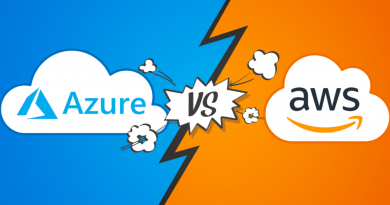Optimizing CloudFront Cache Control for Performance
Optimizing CloudFront Cache. In today’s fast-paced digital world, ensuring that your website loads quickly and efficiently is more important than ever. With Amazon Web Services (AWS) CloudFront, businesses can deliver content seamlessly across a global network, enhancing user experience. Furthermore, to truly harness the power of CloudFront, understanding cache control and CDN optimization is essential. Thus, so now let us explore how these aspects can be optimized for peak performance.
Understanding AWS CloudFront
Essentially, AWS CloudFront is a Content Delivery Network (CDN) offered by Amazon that efficiently delivers data, videos, applications, and APIs to users, minimizing latency through a network of worldwide edge locations. By caching content at these edge locations, businesses can ensure that users access data from the server geographically closest to them. Hence, delivering content quickly is only half the battle; optimizing cache control is the key to maximizing these benefits.
The Role of Cache Control in Performance
Cache control is a crucial aspect of performance optimization. Basically, it defines how, and for how long, content is stored at the edge locations before fetching it again from the origin server. Hence, efficient use of cache control can dramatically reduce load times, thereby boosting user satisfaction and engagement.
Why Is Cache Control Vital?
- Reduced Latency: By storing frequently accessed data closer to users, latency is minimized, enhancing site responsiveness.
- Lower Bandwidth Costs: Efficient caching reduces the amount of data that must be fetched from the origin server, saving on bandwidth costs.
- Increased Availability and Redundancy: With data cached across multiple locations, the risk of server failure impacts is reduced, safeguarding content availability.
Strategies for CDN Optimization
Optimizing a CDN like CloudFront involves several strategies:
Set Optimal TTL Values
Basically, Time to Live (TTL) settings dictate how long content is cached at the edge locations. Therefore, adjusting TTL to suit your content types—short for frequently updated data, longer for static assets—can significantly impact performance.
Use the Correct Cache Behaviors
Above all, configuring cache behaviors allows different types of content to be delivered with appropriate settings. For instance, defining separate caching rules for images versus dynamically generated content optimizes loading times effectively.
Implement Enhanced Compression Techniques
For example, compression techniques, such as GZIP or Brotli, can reduce data size before transfer, meaning quicker download times and less strain on networks. Therefore, leveraging these techniques within your CloudFront deployment is critical.
Leverage Lambda@Edge for Dynamic Customization
Basically, AWS CloudFront’s Lambda@Edge enables you to run code closer to users of your application, modifying requests and responses without impacting the origin server. This customization can help better serve user needs, tailoring content on the fly.
Performance Optimization Tips
Therefore, once your cache control and CDN strategies are in place, further performance optimization can cement your gains:
Monitor and Adjust
Continuous monitoring and analytics should be part of your strategy. CloudFront provides logs and metrics that let you understand usage patterns, allowing for tailored adjustments and scaling decisions.
Use HTTP/2
HTTP/2 offers faster performance with multiplexing, binary framing, and header compression, meaning fewer connections and faster data transfer. Ensure your configurations support HTTP/2 to leverage its benefits fully.
Purge and Invalidate
Regularly purging and invalidating cached data ensures users receive the most current content without unnecessary server load. Automate this process for consistent content freshness.
Conclusion
Implementing these practices for optimizing CloudFront cache control and CDN optimization can significantly elevate your website’s performance, aligning it with the demands of a tech-savvy audience. As digital landscapes continue to evolve, leveraging these strategies ensures a responsive, cost-efficient, and high-performing online presence. Master these techniques and make AWS CloudFront a powerhouse for your digital delivery.
👉 For more insights, visit the ClayDesk Blog: https://blog.claydesk.com




